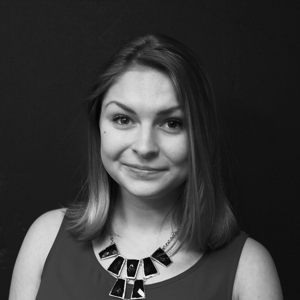Schmit: ‘Deadpool’ sequel has potential to bring pansexuality into the mainstream
Defying industry expectations with a subtly LGBTQ hero, “Deadpool” has just grossed more than one of the most arguably masculine and heteronormative movies of all time, “X-Men Origins: Wolverine.” This success points to the better representation of sexuality that fans, and even Ryan Reynolds, have been pushing for all along.
Reynolds, who plays the title character, announced his acceptance of Deadpool’s pansexuality in the comic book at a New York film screening earlier this month. Pansexuality describes a romantic and sexual attraction that is not based on biological sex or gender identity, and ultimately suits Deadpool, who doesn’t fit the “superhero norm.”
The comments have since brought the conversation about sexuality to the mainstream heading into the film’s sequel, leaving fans to question whether or not pansexuality will be accurately represented in the installment.
Regardless of Deadpool’s sexual partner, having Reynolds, an actor who traditionally plays masculine characters, portray Deadpool, a member of the LGBTQ community, is a huge stride toward inclusion in the media. The film plays into the expectation of a Hollywood action movie in terms of its violent nature and its adherence to using sex to sell. Yet it pushes boundaries in how its advertisement campaigns mocked traditional gender norms and used Reynolds’ masculinity to break down the normal stereotype of LGBTQ characters.
“I love that about Deadpool,” Reynolds said at the red carpet screening, as reported by Variety. “I love that he can break any boundary. In the future, I hope we get to do more.”
Reynold’s outlook is a progressive one, considering the movie adaptation focuses on a heterosexual relationship between Deadpool and his girlfriend Vanessa Carlysle. But the fact that Reynolds acknowledged Deadpool is not straight comes as an incredibly positive change in the thoroughly heteronormative world that is superhero movies.
“There’s veiled references to it in this film,” said producer Simon Kinberg in an interview with Variety. “It’s in the DNA of the character.”
In your average superhero movie, you can expect to see the straight, hypermasculine, macho man conquer the villain and win the heart of the stereotypical feminine woman. Batman and Rachel Dawes, Spiderman and Mary Jane Watson, and Superman and Lois Lane are prime examples.
“In terms of on-screen representation, Hollywood has historically privileged a certain construction of Anglo-American, middle-class, Protestant masculinity, a white and ostensibly straight figure,” said Will Scheibel, an assistant professor of English in Syracuse University’s College of Arts and Sciences, in an email. “The problem, though, is less with superhero movies than with industry politics across the board.”
While Batwoman, Catwoman and Nyssa Al Ghul are visible queer characters, few-to-none are notable, let alone have their own movie. And while any sort of leap toward visibility can be considered a win for the community, the fact that the few non-straight characters are almost exclusively created for the enjoyment of consumers that are men is problematic. We see a trend of lesbian superheroes, but rarely gay male ones, which reinforces the point that a woman’s sexual identity depends on a man’s validation.
On the other hand, despite their ridiculous sexual depiction of women, comic books seeming to outrank their movie adaptations when it comes to the LGBTQ inclusivity. Yet even if there hasn’t been a lot of change in regard to the type of protagonists we see, there has been a change in how we see them.
“Superhero films also trade in a lot of homoerotic imagery and subtexts that are open to queer and camp interpretations,” said Scheibel. “Audiences and fans have helped diversify the genre in their readings and practices, sometimes latching onto a marginal element of a film that becomes of central importance to their mode of identification.”
While there is hope for the sequel, “Deadpool,” despite being awesome, in the midst of its gratuitous violence, only focused on a heterosexual relationship — a common trend of straight-washing within superhero films.
We can also see this phenomenon demonstrated with upcoming release of “Suicide Squad.” The movie, which comes out this August, features Harley Quinn, but fails to include Poison Ivy, a character who is the confirmed girlfriend of the ever-devious Quinn.
Some have argued that the reason for sexuality erasure is fear of higher film ratings, but this is ultimately not fact.
“The invisibility of LGBTQ characters in superhero films has less to do with MPAA (Motion Picture Association of America) standards and more to do with Hollywood playing it ‘safe’ in most commercial genres, sticking with formulas and characters that have a track record for success,” said Scheibel. “I think there is the assumption that traditional moviegoers won’t accept a superhero who is not straight.”
Clearly, the fact that “Deadpool” has made nearly $200 million in the United States alone since its release begs to differ.
Deadpool’s relationship with a woman hardly negates his proclaimed sexuality. But there’s a demand for pansexual visibility by the LGBTQ community, as he is one of the few representatives that do have the ability to be seen as the star of their own movie.
As mentioned by Reynolds in an interview with Variety, it would be nice if Deadpool had an on-screen boyfriend at some point.
So, although the comic book world has traditionally been more LGBTQ-inclusive, it seems that the ever-changing world of film has a long way to go. But with so much potential for sequels, “Deadpool” fans eagerly await to see whether or not we will finally move away from superhero flicks’ heterosexual norm.
Your move Hollywood.
Brontë Schmit is a sophomore magazine journalism major and marketing, english and textual studies, and LGBT Studies minor. Her column appears weekly. She can be reached at bkschmit@syr.edu and followed on Twitter @brontekincaid.
Published on February 22, 2016 at 12:43 am






